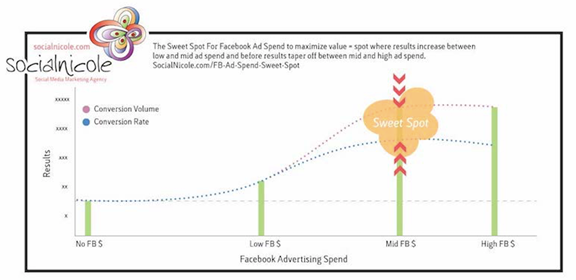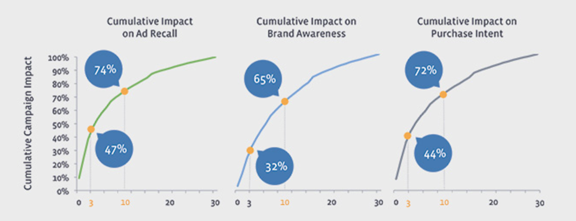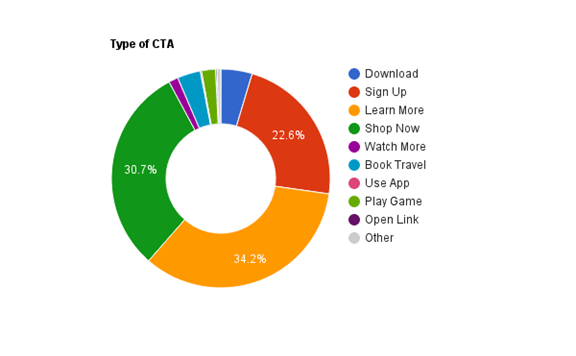As the top used social media service on the Internet, any business looking to connect with a target audience needs to turn to Facebook. Thanks to the analytical data of individual users, creating advertisements geared specifically towards a key demographic remains easier to do with Facebook than most alternatives. However, there are a number of ways any business can improve its Facebook ads, both in reaching a desired and for its return on investment. In fact, here are seven questions a company needs to ask in order to improve its Facebook advertisements.
1) Am I Using The Right Ad Placement Type?
When creating a Facebook advertisement there are a number of placement opportunities. For most businesses, it’s best to experiment initially with these different placements in order to collect analytical data on the highest return on investment. This way, it becomes easier to adjust ad placement based on not only what’s working, but how individual demographics are responding to these different placement options.
On Facebook, it’s possible to place an add on the News Feed, which is front and center on someone’s Facebook profile. Another option is having it appear on the right-hand column, which some users may not even have exposed on their Internet browser. However, while the right-hand column doesn’t have as high of a click-through rate, it costs half as much as the News Feed ads. Additionally, it’s possible to create Facebook Story ads, which a user must click on in order to watch a short video or see an image that will disappear within 24-hours (these ads work similar to Instagram Stories and can, in fact, be shared on both social platforms).
As Volusion points out, advertisement location is often best regulated to at what point in the marketing stage a company is in. Ads in the News Feed are best for connecting with attracting potential clients (as is the case with Facebook Stories and mobile marketing). However, ads in the right-column are better off for individuals who have already visited a website or digital storefront. This helps provide basic reminders to previous visitors and highlight products they might have checked out in the past.
(Source)
2) Do I Have the Right Budget For a Facebook Ad Campaign?
There is a reason most advertisers purchase more than one ad spot during a single television program or sporting event. It’s not out of fear of someone getting up and missing the first commercial. It’s to help hammer the point home. Repeated viewings for a single product or service help individuals remember what they say. The same holds true with Facebook advertising.
In order to maximize Facebook ad potential, it is important to ensure users view advertisements more than once. However, how much is necessary to spend to boost both conversion volume and conversion rate to peak efficiency.
In a study conducted by Social Nicole (2017) a business used Facebook advertising and, week by week, increased its Facebook budget spending by $10. It found spending $100 a day on Facebook advertising maximized boy the conversion rate and conversion volume, with higher spending amounts not generating improved results.

(Source)
It is important for a business to remain within its spending budget, but at the same time, it remains critical to put in the monetary effort to continually remind a target audience of a company’s products and services.
3) Is the Visual Attention Grabbing?
When Facebook first started as a means for college students to interact and connect with one another it very much hinged on text-based updates. Commenting and sharing content didn’t become a major aspect to the social media platform until much later. Outside of sending emails and using the “Poke” feature, college students slowly gained the ability to share links and post pictures, typically from their computer, as the smartphone application did not come out for a few years.
In the modern world of Facebook just about all of it is visually based. Since Facebook purchased Instagram, the company has continually pushed visual content, including both film and still photographs. Due to this, in order for an advertisement to stand out from other posts, it needs to have a creative, attention-grabbing visual. In fact, as Consumer Acquisitions points out, at any one time on Facebook, 75 percent to 90 percent of the ads have an incorporated image.
However, while using images can help, Web Marketing Pros points out video is now key to grabbing the attention of users on Facebook. This is because even if the user does not play the video, they automatically see the image thumbnail. The image thumbnail, typically the beginning of the video, can act a still advertisement, only to play and provide more information after clicking it.

(Source)
As the Web Marketing Pros information points out, while watching the video increased brand awareness by 65 percent, brand awareness still went up by 32 percent even when left unplayed. Unplayed videos even increased the cumulative impact on purchase intent by 44 percent. This shows the importance of not only creating visually attention images but using these images at the front of a video.
4) Have I Optimized My Landing Page?
Creating the perfect Facebook ad doesn’t just stop at the visual and text information present in the social media advertisement. It continues on to the website landing page. If the information on the landing page is not optimized for the specific Facebook advertisement those who clicked on the ad become significantly more likely to back out of the website and abandon the entire approach. This represents not only a waste in a possible lead but it is also a loss of money, as each Facebook ad click costs a business money.
One of the biggest mistakes a business can make is not utilizing unique landing pages based specifically on the advertisement format. The beauty of Facebook is a company has the capability of creating individual advertisements for not only different demographics but also segments within the demographic. As Wishpond (as reported by Spear Out Freedom) points out, companies that have at least 30 different landing pages generate seven times more leads than companies with 10 landing pages.
(Source)
5) How Good Is My Call to Action?
An advertisement is only as good as its call to action. Without a quality CTA, a viewer may not know what is expected of them. Even if they like the advertisement and the information provided unless they’re told to follow a link, download the free trial software or subscribe for new updates, they may watch the ad and, from there, go about their day.
The lack of direct CTAs in Facebook advertisements is nothing new. In fact, according to Ad Espresso by Hootsuite (2017), it’s one of the biggest reasons why most Facebook marketers fail to experience a desirable return on investment while advertising on the social media platform. According to the company’s research, just 56 percent of Facebook advertisements contained any CTA. This instantly puts the other 44 percent behind, attempting to catch out.
Of the advertisements that did use a call to actions, “Learn More” was by far the most popular, making up 34.2 percent of the CTAs (on those advertisements that contained a call to action). The next most popular is “Shop Now” at 30.7 percent, and “Sign Up” at 22.6 percent. Nothing else had above 10 percent.

(Source)
According to the same research, of the most beneficial CTAs, “Learn More” demonstrated a 22.5 percent higher click-through rate, while “Sign Up” offered a 14.5 percent higher conversion rate. In reality, it all comes down to what a business wants to accomplish with its Facebook advertisement. Regardless though, it is critical to include a clear call to action.
6) Do I Know the Target Audience?
Likely the most critical question a business needs to ask (and answer) is whether or not it is marketing to the correct target audience. Failure to identify the right audience will result in underperforming Facebook ads and overspending with a poor return on investment.
As Marketing Artfully (2018) points out, it’s important to start out with the target audience basics, including age, education, gender, family (if they have children or not) and whether they use Facebook at home, at work or on their mobile device. It is important to know the location of Facebook usage as work users are less likely to click advertisements while at work than they would at home.
7) What Is My Objective?
Every Facebook advertisement campaign needs to have a clearly defined objective or end goal. It is important to focus on one individual goal and shoot for it. This includes anything from increasing sales to boosting subscriber numbers or building an email contact list. While secondary benefits often come out of a marketing campaign the best way to determine success is to aim for one end goal per marketing campaign.
Facebook will help users generate the right kind of advertisements based on what their objectives are. While creating an advertisement on Facebook the social media service, as Digital Marketer points out, will ask what the object of the ad is. These ad objects are broken down into eight different categories: clicks to a website, website conversions, page likes, page post engagement, app installation, app engagement, event responses and “other.”
(Source)
While taking the assistance of Facebook to customize an advertisement is important, businesses need to decide before beginning the creation of an advertisement. This way, they will already know what kind of Facebook result they want with the ad before starting the Facebook ad creation process.
In Conclusion
By asking these seven questions, a company advertiser, social media manager or small business owner has the ability to improve its Facebook advertisements. It is important to take a hard look at each of these questions in order to determine not only what works best for the business, but also what its overall goals are with the marketing material. Once each of these seven questions is answered it will become that much easier to connect with a target audience while seeing a boost with the desired objective.







